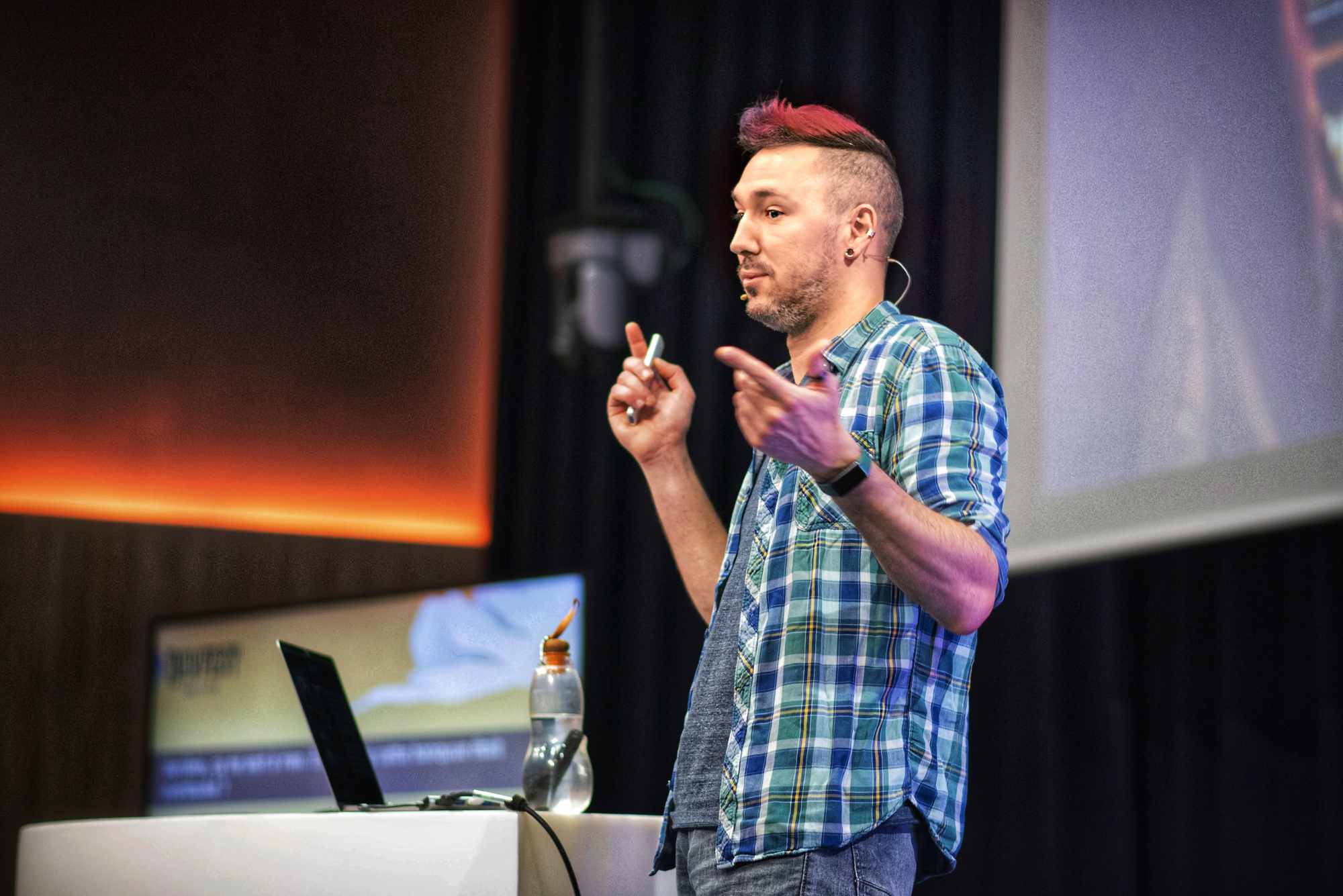Few people know that people with disabilities can use digital tools
Geoffrey Crofte is a UX designer at Foyer and puts digital accessibility issues at the heart of his work.
Monday, May 22, 2023
Do creativity and accessibility go hand in hand? Is it easy to make a website compliant? How do we become sensitive to these issues? Geoffrey Crofte was happy to answer our questions. Interview.

Where does your interest in accessibility come from?
As a general rule, people who take a personal interest in this issue are often directly or indirectly affected. For example, they may have someone close to them who is disabled, or they may be disabled themselves.
This is not my case, as far as I know, but I was made aware of it about ten years ago, during my first professional experiences at Alsacréations in Strasbourg. They were already ahead in terms of web quality and had an accessibility expert. I learned from him, which significantly influenced my user experience approach. Right from the start, I wanted to do things right, so that users - all users - could navigate the interfaces I was developing.
Today, has this issue become a cause, a struggle or, to put it more simply, a reality, similar to how it is difficult to imagine a house without a front door?
First and foremost, the simple fact that it's an integral part of my daily life. When I make a design decision, it applies to all users, including people with disabilities. Text needs to be large enough and in sufficient contrast for everyone, to give just one example, but there are many other points to consider.
And when I spot major problems on other platforms, I point them out, either on LinkedIn or Twitter; in general, I'm rather outspoken. That's where the challenge lies for me, as there is resistance to change. The typical feedback I get is 'thank you, we'll pass it on to our technical teams', which is a polite response but doesn't necessarily lead to implementation. It's a pity because the solution to be applied is not always complicated.
My experience with Groupe Foyer, particularly Foyer Assurances, has also shown me that, above all, few people realise that individuals with disabilities can use digital tools and that simple solutions exist. Unless we know people who are affected, it's easy to overlook the issue of digital accessibility. Sometimes it just requires a bit of extra attention that can be incorporated into our daily tasks.
What challenges have you set yourself within your company?
An audit carried out at the beginning of 2023 showed that our Website was 34% compliant with existing standards. We can double this score quite easily. Just as public bodies have to set an example before the new law on accessibility is applied to the private sector by 2025, it would be good for us to prove that, as an insurer, we are the first to make this effort.
"In addition to raising awareness, we also need to provide training
And this effort will benefit everyone: our customers, the company, and it's also an extra protection for ourselves later on... if we're lucky enough to grow old.
Whether it's the developer who's more familiar with the semantics of HTML language or the colleagues who make their PDFs more accessible, we need a trigger that makes them aware of the needs of these disabled users.
As well as raising awareness, training is also needed. Half of my design team and eight developers are taking accessibility training this year. This was decided last year. Accessibility is a natural extension of the corporate social responsibility (CSR) that we have been promoting for several years now.
Is a 100% creative and innovative design compatible with a 100% compliant site in terms of accessibility?
I tend not to like the term "100% accessible"... but yes, it's possible to meet all the WCAG or RGAA criteria and still be creative. The Grenoble metropolitan website is 100% compliant. It's very attractive and, what's more, very easy to understand. It sets a good example to follow.
Today, the technologies to produce elegant, animated content that respects the preferences of those who, for example, want to avoid visual effects, display enhanced contrasts or navigate in dark mode are available.
If we had to change anything today in the field of accessibility, what would it be?
Audits. The frameworks sometimes lack clarity or examples. From time to time, I struggle to understand what they're trying to tell us, even though I'm not new to the subject. Nowadays, anyone, expert or not, should have a simple, documented, demonstrative tool at their disposal, to help them improve the accessibility of their digital interfaces.
